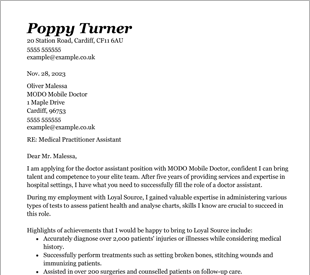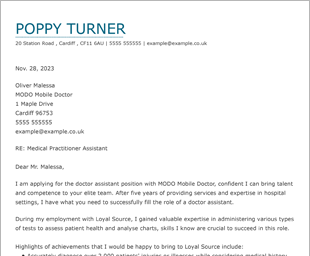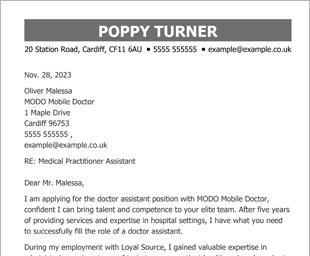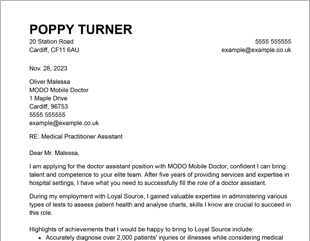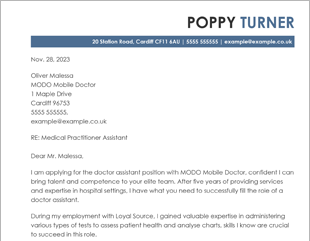Every cover letter you submit should be unique if you intend to convince potential employers that you are the perfect candidate for their job opening. A good cover letter example should contain these set of key components:
Header
Just as professional business letters have headers, a cover letter should have a header that includes your full name, phone number, email address, and optionally your professional social media links, like your LinkedIn profile. When a hiring manager is going back through applications to make decisions, you’ll want your essential information listed clearly at the top so you don’t get lost in the pile.
Personalised salutation
Directly below the header, there should be a personalised salutation. Ideally you would want to use the name of the hiring manager, but that is not always possible. Instead, consider salutations such as “Dear Hiring Manager” or “Dear Sir or Madam”. A personal can greeting show a prospective employer that the candidate is putting effort into their job search, but the information is not always available.
Two to three paragraphs
The body of a cover letter should have two to three paragraphs, unless you have a lot of relevant experience to discuss. The first paragraph should introduce you as a candidate and provide an eye-catching example of what you think makes you a valuable asset. For example, you could discuss an award you have won or specific achievement. This will make a strong first impression.
You should also indicate precisely which job title you are applying for. Check the job advert to ensure you list it precisely. The second and third paragraphs should build on this by providing relevant examples of your skills in action and indicating your enthusiasm for the role you are applying for. The goal of cover letter body paragraphs is to convince a recruiter of your suitability for the role.
Call to action
After you have made your case, you should create a concise and robust call to action before you end the cover letter. A good call to action will stick in the hiring manager’s mind and increase your chance of getting a job interview. Most job seekers opt for a gentle call to action, such as, “I hope to hear from you soon,” but a more robust statement such as “I look forward to speaking with you,” can also be effective.
Professional sign-off
A simple, professional sign-off such as “Yours sincerely,” if you’ve already met the hiring manager, or “Yours faithfully,” if you have not, is the ideal way to end a cover letter. Check out our high-quality cover letter templates to make formatting your cover letter quick and easy.
